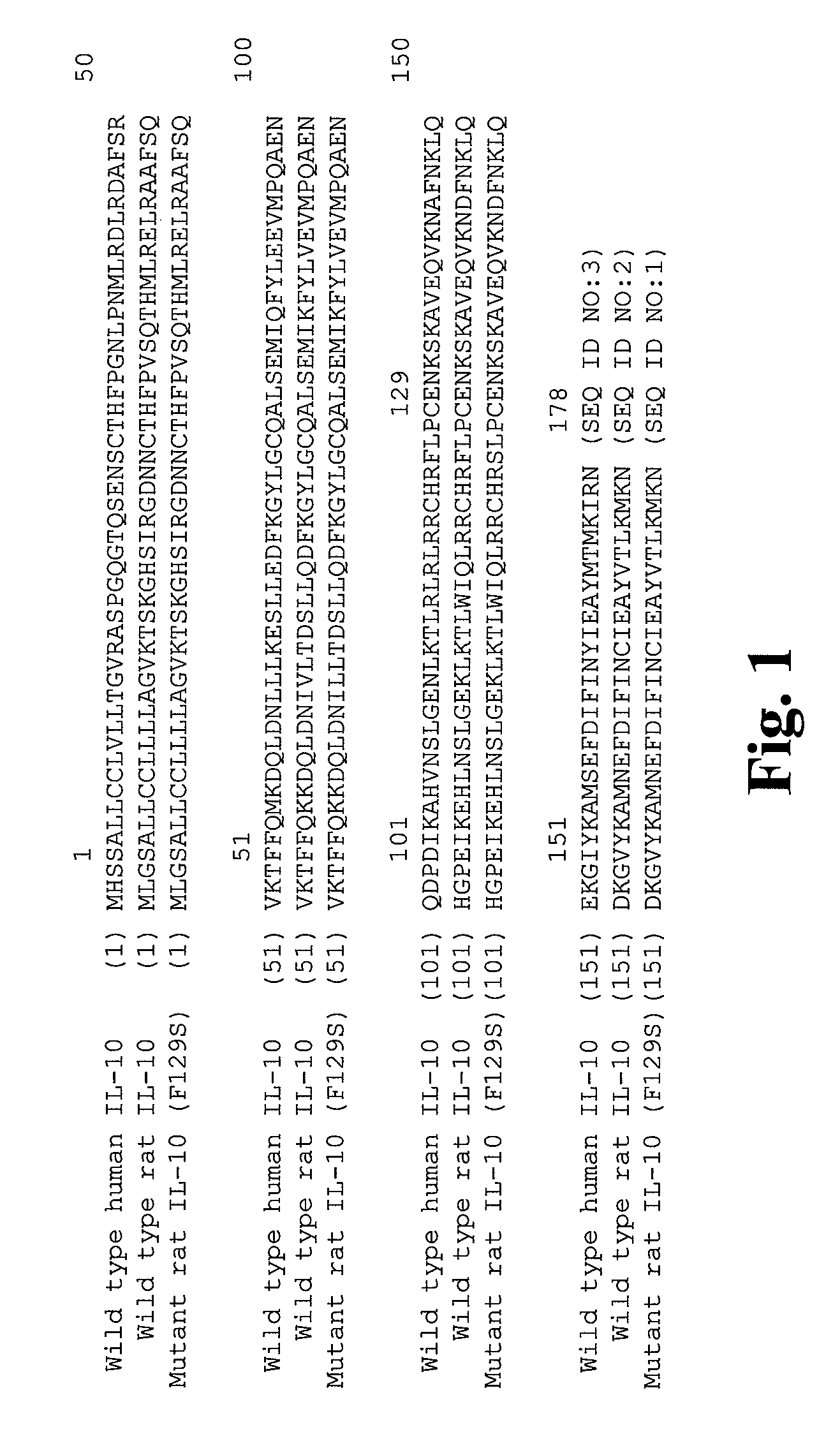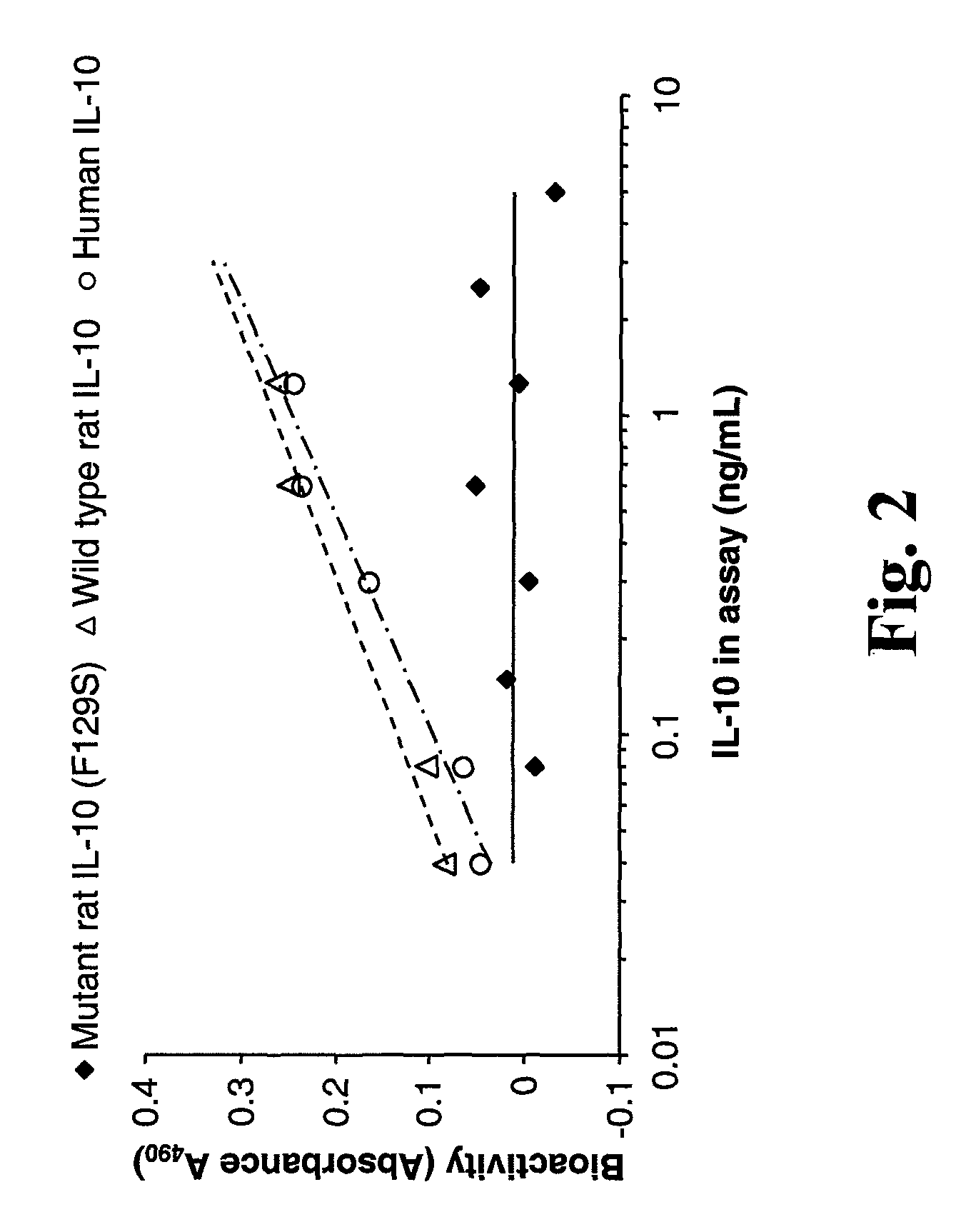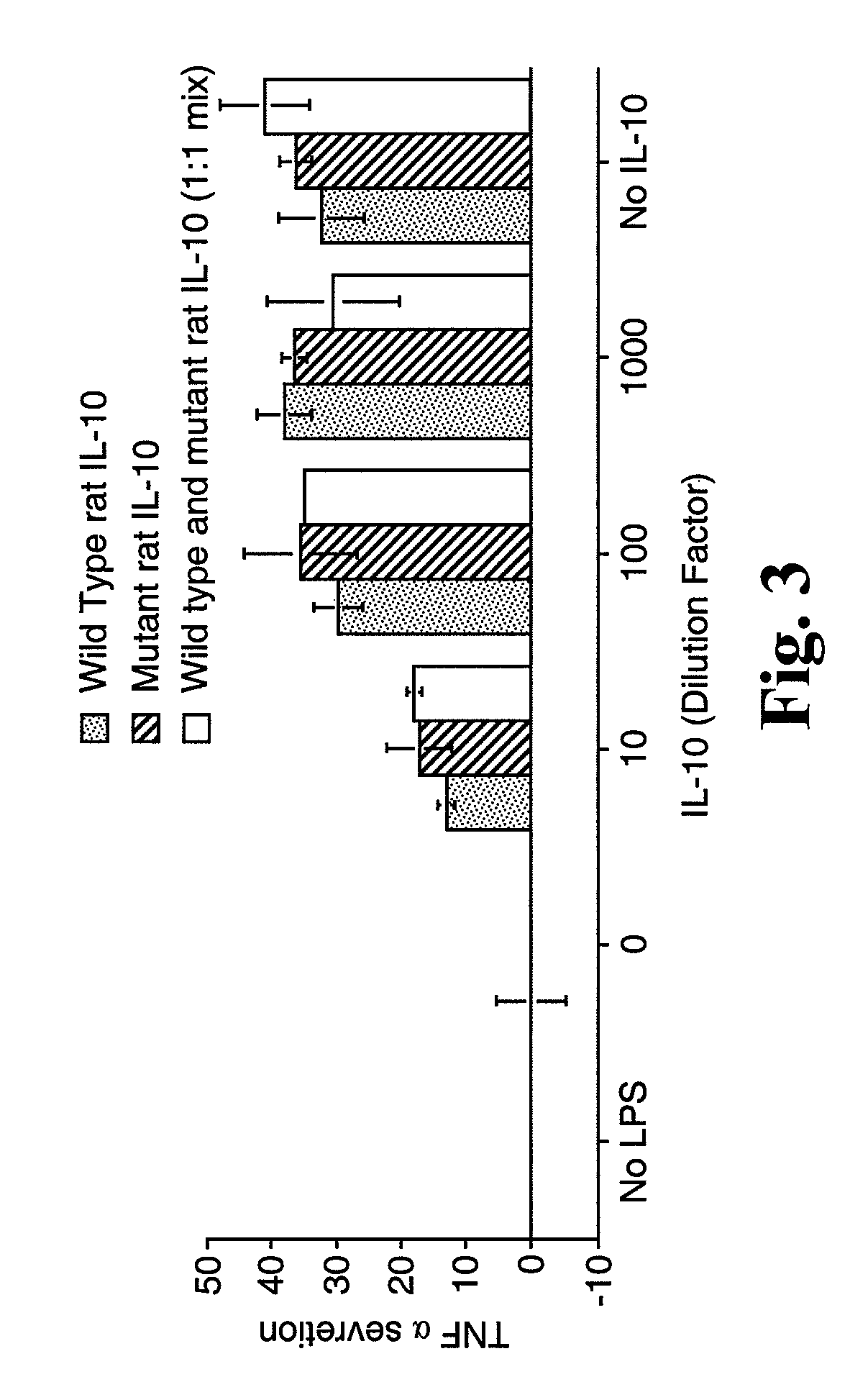Mutant IL-10
a technology of interleukin 10 and il-10, which is applied in the field of il-10 mutant form, can solve the problems of limited clinical development of il-10 and undesirable cell proliferative activity of il-10, and achieve the effect of reducing the risk of il-10 toxicity and reducing the risk of toxicity
- Summary
- Abstract
- Description
- Claims
- Application Information
AI Technical Summary
Benefits of technology
Problems solved by technology
Method used
Image
Examples
example 1
Bioactivity of rIL-10 (F129S)
[0169]Experiments were performed to compare the bioactivity of rIL-10 (F129S) to the bioactivity of wild-type rat IL-10 (rIL-10) and wild-type human IL-10 (hIL-10) in the MC / 9 cell proliferation assay. COS-7 cells were transfected with plasmids expressing either wild type rIL-10, rIL-10 (F129S) or hIL-10. IL-10 in culture supernatants was quantified by ELISA and added to MC / 9 cells in the amounts shown. MC / 9 cell proliferation as a result of IL-10 stimulation (“bioactivity”) was measured in an MTT assay. Thompson-Snipes et al. (1991) J. Exp. Med. 173:507-10. FIG. 2 presents the results, demonstrating the lack of bioactivity of the rIL-10-F129S in an MC / 9 cell proliferation assay.
example 2
In Vitro TNFα Secretion Activity of rIL-10 (F129S)
[0170]Experiments were performed to compare the in vitro TNFα secretion activity of rIL-10 (F129S) to the in vitro TNFα secretion activity of rIL-10 and a 1:1 mixture of rIL-10 and rIL-10 (F129S). COS-7 cells were transfected in vitro with plasmids expressing either rIL-10 or rIL-10 (F129S), or a 1:1 mixture of the two plasmids. Culture supernatants containing expressed IL-10 were added to HAPI cells stimulated with lipopolysaccharide (LPS) to induce TNFα secretion. As shown in FIG. 3, mutant and wild type rat IL-10 suppress TNFα secretion in a similar, dose-dependent manner.
example 3
Reversal of Mechanical Allodynia by rIL-10 (F129S) In Vivo
[0171]Experiments were performed to determine whether rIL-10 (F129S) is capable of reversing mechanical allodynia in the commonly used in vivo model of chronic constriction injury (CCI) of the rat sciatic nerve. Milligan et al. (2001) J Neurosci. 21:2808-19. The CCI model consists of the loose ligation of the sciatic nerve at mid-thigh level with chromic gut sutures. An inflammatory reaction results, which is associated with spontaneous pain-related behavior, allodynia and hyperalgesia. Mechanical allodynia is tested by application of von Frey hairs producing a specified pressure (stimulus intensity) on the hind pad. CCI was performed on Day 1, as well as a sham surgery without nerve ligation. Allodynia developed by Day 3 as seen by increased pain sensitivity (lower stimulus intensity). Plasmids carrying rIL-10 (F129S), or green fluorescent protein (GFP) as a negative control, were injected intrathecally on Days 10 and 13. As...
PUM
| Property | Measurement | Unit |
|---|---|---|
| concentration | aaaaa | aaaaa |
| temperatures | aaaaa | aaaaa |
| nucleic acid | aaaaa | aaaaa |
Abstract
Description
Claims
Application Information
 Login to View More
Login to View More - R&D
- Intellectual Property
- Life Sciences
- Materials
- Tech Scout
- Unparalleled Data Quality
- Higher Quality Content
- 60% Fewer Hallucinations
Browse by: Latest US Patents, China's latest patents, Technical Efficacy Thesaurus, Application Domain, Technology Topic, Popular Technical Reports.
© 2025 PatSnap. All rights reserved.Legal|Privacy policy|Modern Slavery Act Transparency Statement|Sitemap|About US| Contact US: help@patsnap.com



